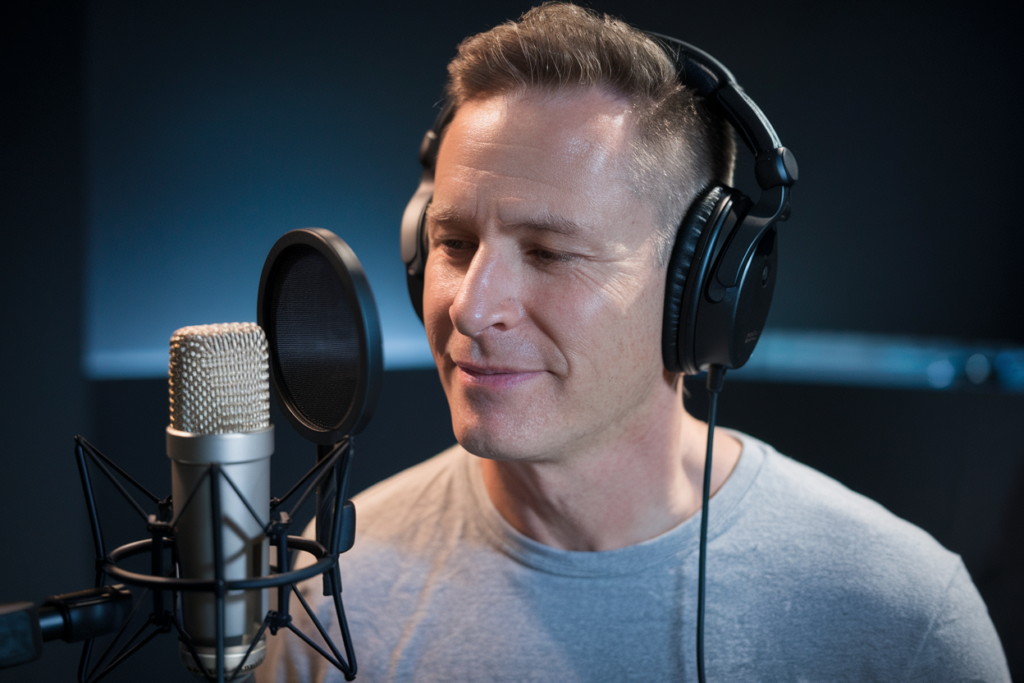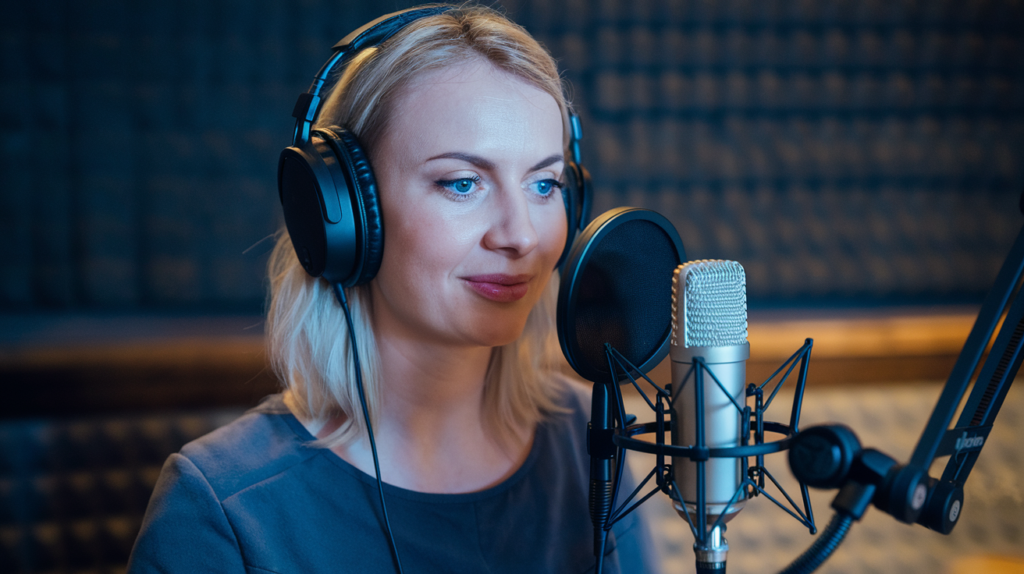Key Takeaways
- Understanding Video Dubbing: Dubbing is not just about translating words; it involves replacing the original audio with a new track in Polish, capturing the essence and emotions of the content.
- Importance of Voice Talent: Selecting skilled voice actors who understand cultural nuances is crucial for creating authentic and engaging dubbed videos that resonate with Polish audiences.
- Precise Timing Matters: Synchronizing dialogue with lip movements requires expertise to ensure a natural and immersive viewing experience without distractions.
- Essential Tools for Success: Utilize quality software (like Audacity or Adobe Audition) and hardware (such as high-quality microphones and audio interfaces) to achieve professional-level dubbing results.
- Steps to Effective Dubbing: Prepare your video by adapting scripts, recording voiceovers in a noise-free environment, and meticulously syncing audio with visuals for seamless integration.
- Focus on Audio Quality: Prioritize clear sound through professional equipment and post-production editing techniques, enhancing viewer immersion and overall impact.
Ever wondered how to dub videos in Polish and reach a wider audience? Whether you’re a content creator or a business looking to expand your market, dubbing can be the key to connecting with Polish speakers. It’s not just about translating words; it’s about capturing the essence of your message while making it sound natural.
Understanding Video Dubbing
Video dubbing involves replacing the original audio of a video with a new audio track in a different language, such as Polish. This process isn’t just about translating words; it’s about capturing the emotions and nuances of the original content. You want your audience to feel engaged and connected to what they’re watching.
In dubbing, voice talent plays a crucial role. Skilled voice artists can bring characters to life by matching their tone, style, and pace with the visuals on screen. Using professional voice actors ensures that your message resonates well with Polish speakers while maintaining authenticity.
The choice of voice over talent significantly impacts the overall quality of your dubbed video. Select artists who understand cultural contexts and subtleties in language, making sure they convey messages effectively. Finding the right match for your project enhances viewer experience, whether it’s an animated film or corporate training video.
Timing is another critical element in dubbing. Synchronizing dialogue with lip movements requires precision and expertise from voice over professionals. A well-timed dub not only looks natural but also keeps viewers immersed in the story without distraction.
When starting your dubbing project, consider these factors:
- Script Adaptation: Adjust scripts for cultural relevance while ensuring clarity.
- Voice Selection: Choose voice actors whose styles align with your project’s tone.
- Sound Quality: Invest in high-quality recording equipment or professional studios to avoid poor sound quality.
- Post-Production Editing: Edit audio tracks meticulously for seamless integration into videos.
Dubbing opens up new markets for content creators and businesses alike by breaking down language barriers. Engaging audiences through well-executed Polish dubbing amplifies reach and fosters connection across cultures.
Tools Required for Dubbing
Dubbing videos in Polish requires specific tools to ensure high-quality results. You’ll need both software and hardware that facilitate seamless voice recording and editing.
Software Options
Selecting the right software is crucial for dubbing. Look for audio editing programs that allow precise control over sound tracks and easy synchronization with video content. Popular choices include:
- Audacity: This free, open-source software offers a user-friendly interface, perfect for beginners.
- Adobe Audition: A professional-grade tool with advanced features for sound mixing, effects, and mastering.
- Reaper: An affordable digital audio workstation (DAW) that’s highly customizable.
- Pro Tools: Industry-standard software known for its powerful capabilities in voiceover production.
These options provide essential features like multi-track editing, noise reduction, and vocal enhancement to help you achieve polished results.
Hardware Requirements
Investing in quality hardware enhances your dubbing process significantly. Consider these essentials:
- Microphone: A high-quality condenser microphone captures clear and detailed vocals. USB microphones are convenient while XLR mics offer superior sound quality when paired with an audio interface.
- Audio Interface: This device converts analog signals from your microphone into digital data. It improves sound fidelity compared to standard computer inputs.
- Headphones: Closed-back headphones prevent sound leakage during recording sessions, allowing you to monitor your voiceovers accurately without distractions.
- Pop Filter: This accessory reduces plosive sounds created by hard consonants like „p“ and „b,“ ensuring smoother recordings.
By equipping yourself with the right tools—software for editing and hardware for capturing—you set the stage for successful Polish dubbing projects that resonate with audiences.
Steps to Dub Videos in Polish
Dubbing videos in Polish requires a careful approach to ensure the final product resonates with the audience. Follow these essential steps for successful video dubbing.
Preparing Your Video
Preparation sets the foundation for effective dubbing. Start by selecting your video and script, ensuring that the content aligns with cultural nuances relevant to Polish viewers. Adapt your original script as needed, focusing on natural language that maintains the essence of your message. This step may involve working closely with translators or linguists who understand both languages deeply. Once you have a polished script, review it alongside your visuals to identify key moments where voiceovers will be most impactful.
Recording Your Voice
Recording quality plays a crucial role in how well your dubbing is received. Choose an environment free from background noise; this enhances audio clarity and professionalism. Using high-quality microphones ensures that every nuance of your delivery comes through crisply. When recording, focus on matching the tone and energy of the original content while infusing your unique style into the voiceover performance. Whether you’re a seasoned voice actor or new to voice work, practice reading aloud to find a comfortable pace and intonation before hitting record.
Syncing Audio with Video
Syncing audio with video involves precision and attention to detail. Start by importing both audio tracks into editing software designed for this purpose—many options like Audacity or Adobe Audition offer features tailored for syncing tasks. Align dialogue timing with lip movements carefully; this enhances viewer immersion and believability of characters‘ actions on screen. Adjust any discrepancies between sound cues and visuals during post-production editing for seamless integration.
By following these steps diligently, you’ll create engaging dubbed videos that resonate powerfully with Polish audiences, effectively bridging language gaps while maintaining emotional connections.
Tips for Effective Dubbing
Effective dubbing requires a blend of technical skills and artistic sensibility. Focus on these strategies to enhance your dubbing projects.
Voice Modulation Techniques
Utilize voice modulation techniques to convey emotions accurately. Adjust pitch, tone, and pace based on the context of the scene. A skilled voice actor can make characters believable by emphasizing emotional highs and lows. Experiment with different delivery styles; sometimes a softer voice adds depth, while other moments may call for intensity. Think about how nuances in speech can change the audience’s perception—subtle shifts can significantly impact engagement.
Improving Audio Quality
Prioritize audio quality throughout the dubbing process. Use professional-grade microphones to capture clear sound without unwanted noise. Ensure your recording environment is quiet; even small distractions can detract from the final product. Incorporate quality audio interfaces to maintain signal integrity during recording. Additionally, pay attention to post-production editing; applying noise reduction and equalization improves overall clarity. Remember, excellent audio contributes immensely to viewer immersion—it’s what draws them into your story.
Conclusion
Dubbing videos in Polish is a powerful way to engage with a wider audience and enhance your content’s reach. By focusing on the nuances of language and culture you can create an authentic experience that resonates with viewers.
Choosing the right voice talent and ensuring high-quality audio are essential steps in this process. When done correctly effective dubbing not only bridges language gaps but also enriches emotional connections with your audience.
Investing time in preparation and utilizing the right tools will lead to polished results that stand out. As you embark on your dubbing journey remember that every detail counts in making your content accessible and enjoyable for Polish speakers.
Frequently Asked Questions
Why is dubbing important for Polish audiences?
Dubbing is essential for connecting with Polish audiences as it not only translates content but also conveys the original message’s essence in a culturally relevant way. This enhances viewer engagement and helps creators reach broader markets.
What role do voice actors play in video dubbing?
Voice actors bring characters to life by matching their tone and style with visuals, ensuring that emotions and nuances from the original content are effectively conveyed. Their skills significantly impact the overall quality of the dubbed video.
How does timing affect video dubbing?
Precise synchronization of dialogue with lip movements is crucial in dubbing. Proper timing maintains viewer immersion and makes the experience more natural, allowing audiences to connect better with the content.
What tools are needed for successful video dubbing?
Successful video dubbing requires both software and hardware tools. Recommended software includes Audacity, Adobe Audition, Reaper, and Pro Tools. Essential hardware includes high-quality microphones, audio interfaces, closed-back headphones, and pop filters.
What steps should be followed when dubbing videos in Polish?
Key steps include selecting the right video, adapting scripts for cultural relevance, recording in a noise-free environment with quality equipment, and precisely syncing audio to match lip movements to enhance viewer connections.
How can technical skills improve dubbed content?
Technical skills like voice modulation techniques can accurately convey emotions through pitch adjustments based on context. Improving audio quality through professional-grade equipment further enhances clarity and viewer immersion in dubbed videos.
What post-production editing tips enhance dubbed videos?
Post-production editing is vital; focus on noise reduction and equalization to improve sound clarity. These efforts ensure that dubbed content resonates well with Polish audiences while maintaining emotional depth throughout the viewing experience.







